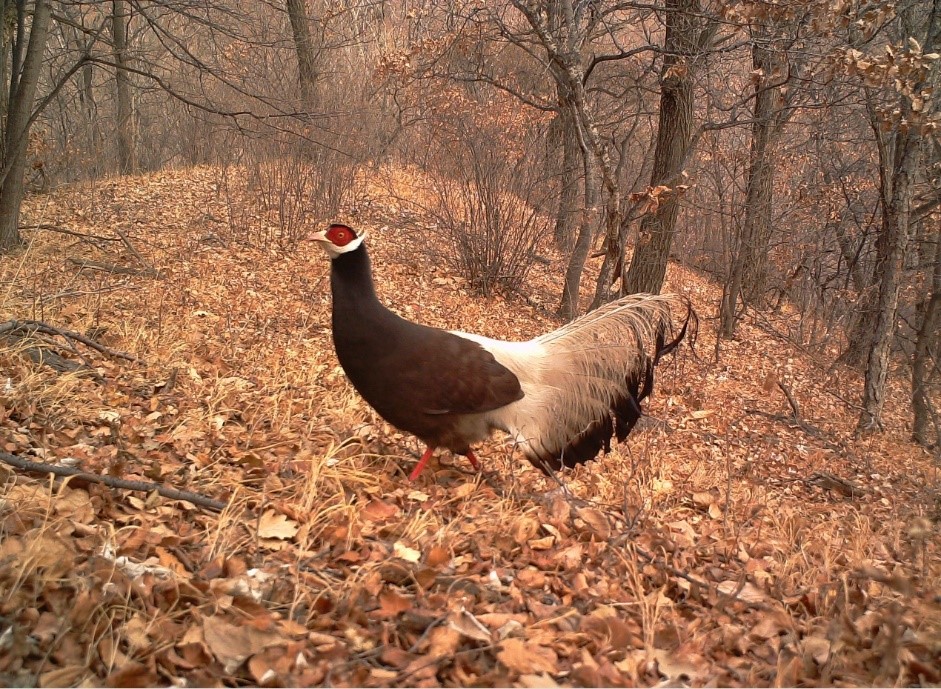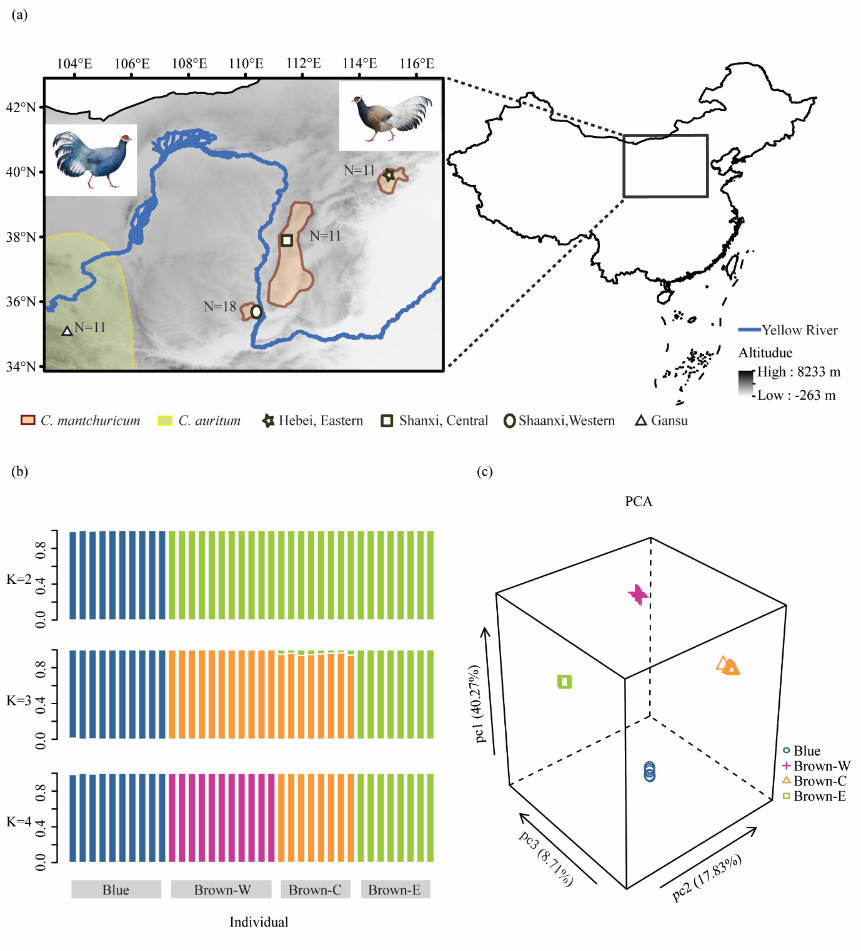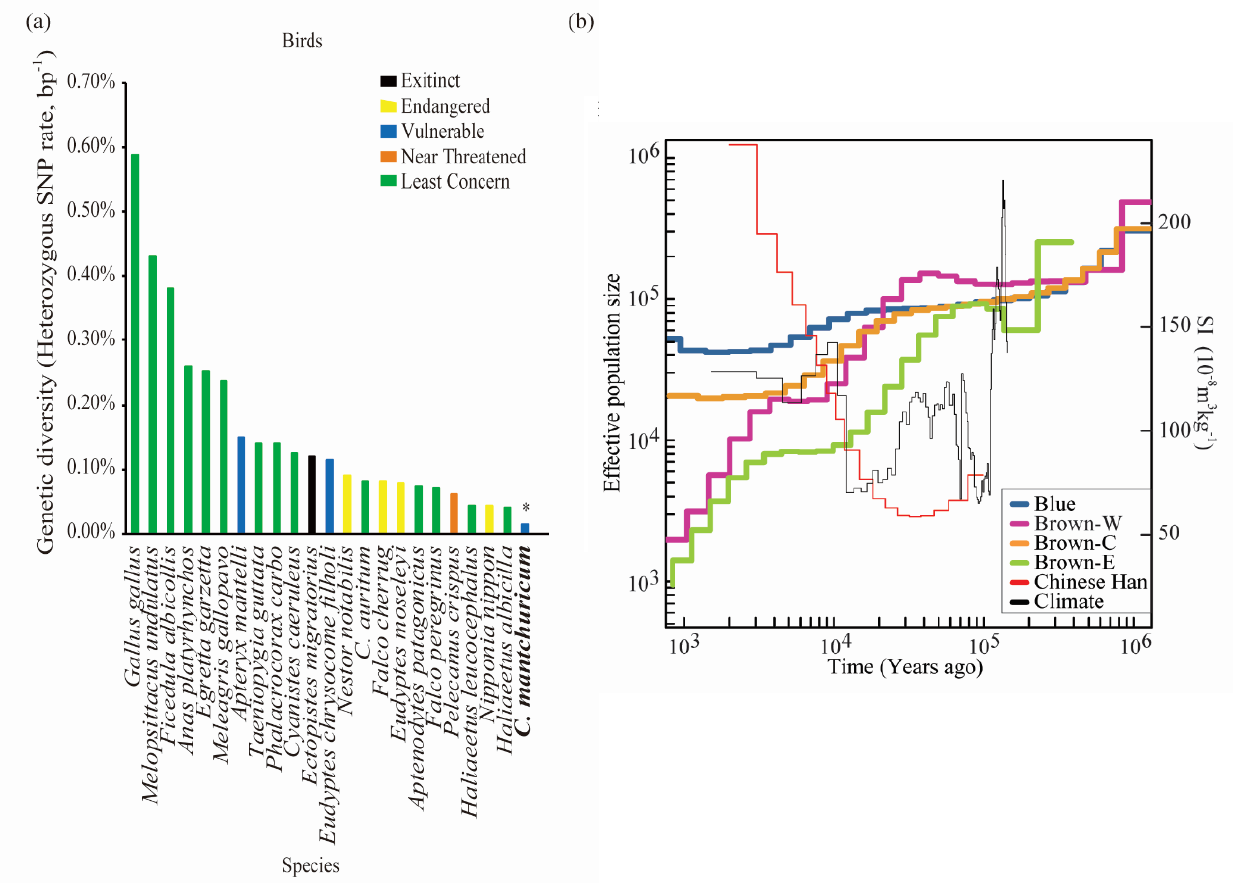Events
News
Professor Zhengwang Zhang’s research team revealed the genetic mechanism of the endangered Brown Eared Pheasant
The population decline and endangerment of species are the result of the combined effects of the environment and the evolutionary history of species. Human activities, habitat fragmentation and the loss of genetic diversity are the main factors leading to the endangerment of species. At present, Conservation Genomics has become a new method to investigate the genetic mechanism of endangered species, and it plays an important role in formulating conservation plans for endangered species.
The Brown eared pheasant (Crossoptilon mantchuricum, Fig. 1) have been distributed widely and in large numbers in history, but their population continued to decline. It is currently confined to three fragmented areas in Shaanxi, Shanxi, and Hebei Provinces and Beijing Municipality in north central China (Fig. 2a)
Professor Zhang Zhengwang from Beijing Normal University teamed up with researchers from Harvard University, Sun Yat-sen University, Chinese Academy of Environmental Sciences, Taiwan Normal University and other units, reveals the genetic mechanism of the endangered Brown eared pheasant for the first time. On the basis of long-term field research, high-throughput sequencing technology was used to analyze the population genomics of 40 individuals of three populations of Brown eared pheasant and 11 individuals of its relative species, Blue eared pheasant (Fig. 2a). They found the genetic diversity of Brown eared pheasant is lower than most endangered species such as Crested ibis and White-tailed eagle (Fig. 3a). There is obvious genetic differentiation between the three Brown eared pheasant populations (Fig. 2b), and there is almost no gene flow between each other. The three populations all have serious inbreeding and have accumulated more harmful mutations. The effective population size of the Brown eared pheasant began to decline continuously about 37,000 years ago, and it has accelerated significantly in modern times (Fig. 3b). At the same time, the population of the Chinese Han has increased rapidly (Fig. 3b), indicating that the population decline of the Brown eared pheasant may be related to the continuous increase in human activities. Based on these results, professor Zhengwang Zhang’s research team proposed that human activities and habitat fragmentation are the main reasons for the loss of genetic diversity of Brown eared pheasant. They urge for further reduction of human activities in the reserve to promote the recovery of its wild population. On the other hand, they suggest to use genomics technology to select individuals with fewer harmful mutations for genetic exchange between populations, and to carry out reintroduction program in its historical distribution area, in order to gradually restore the genetic diversity and the population size of Brown eared pheasant.
The research was published online on August 27, 2020 in the top evolutionary biology journal Molecular Biology and Evolution, titled “Genomic Consequences of Long-term Population Decline in Brown Eared Pheasant” (https://academic.oup.com/mbe/advance-article/doi/10.1093/molbev/msaa213/5898204). Pengcheng Wang, a PhD graduate from the College of Life Sciences at Beijing Normal University and now a postdoctoral fellow at the Institute of Zoology, Chinese Academy of Sciences, is the first author of the paper. Professor Zhang Zhengwang from the College of Life Sciences at Beijing Normal University and Professor Scott V. Edwards from the Department of Organismic and Evolutionary Biology of Harvard University are the co-corresponding authors. This research was funded by the National Key Program of Research and Development from Ministry of Science and Technology of China, the National Natural Science Foundation of China, the Biodiversity Survey, Monitoring and Assessment Project of the Ministry of Ecology and Environment, China, and the China Postdoctoral Science Foundation.

Fig. 1 Photo of Brown eared pheasant from Beijing population
(taken by Professor Zhang Zhengwang’s team using a camera trap).

Fig. 2 Distribution and genetic population structure of Brown eared pheasant and Blue eared pheasant.

Fig.3 The genetic diversity and demographic history of Brown eared pheasant.


